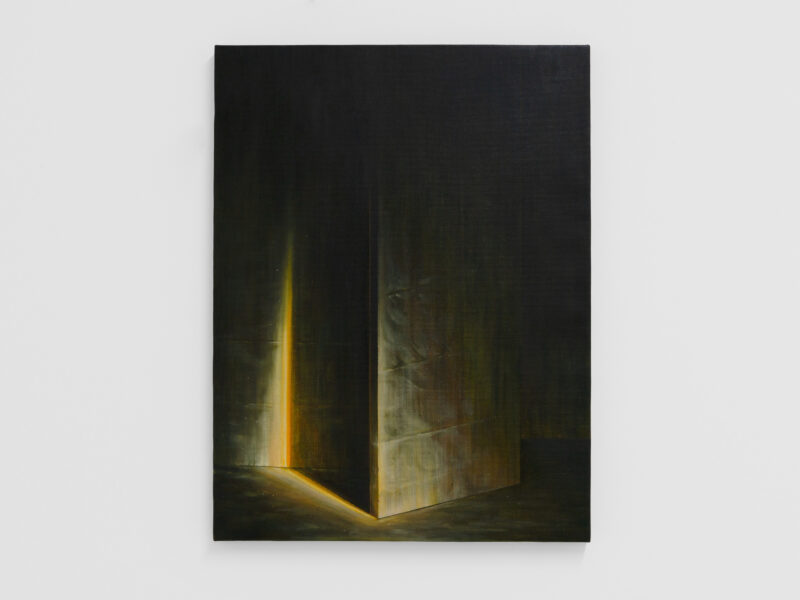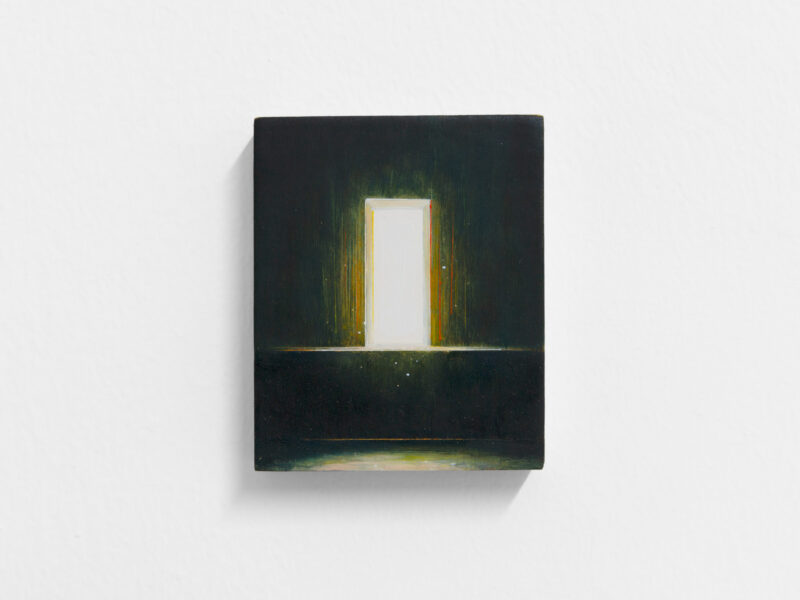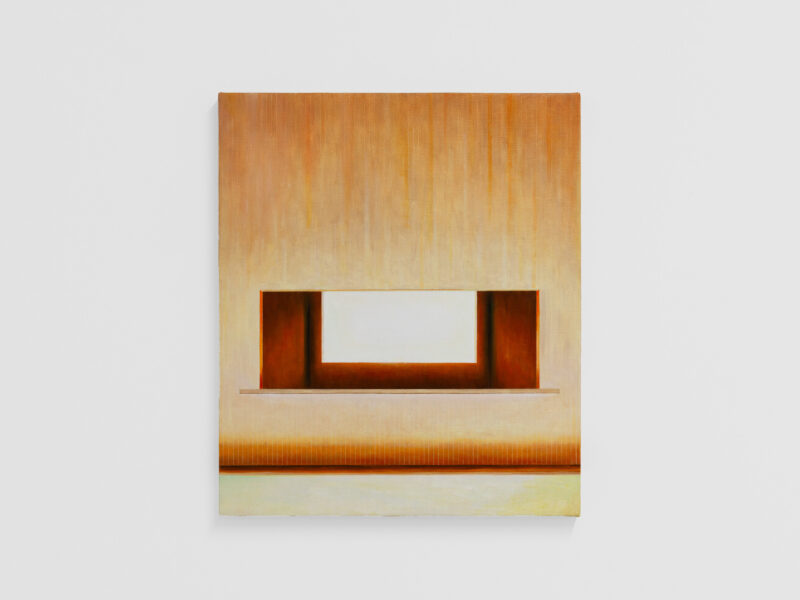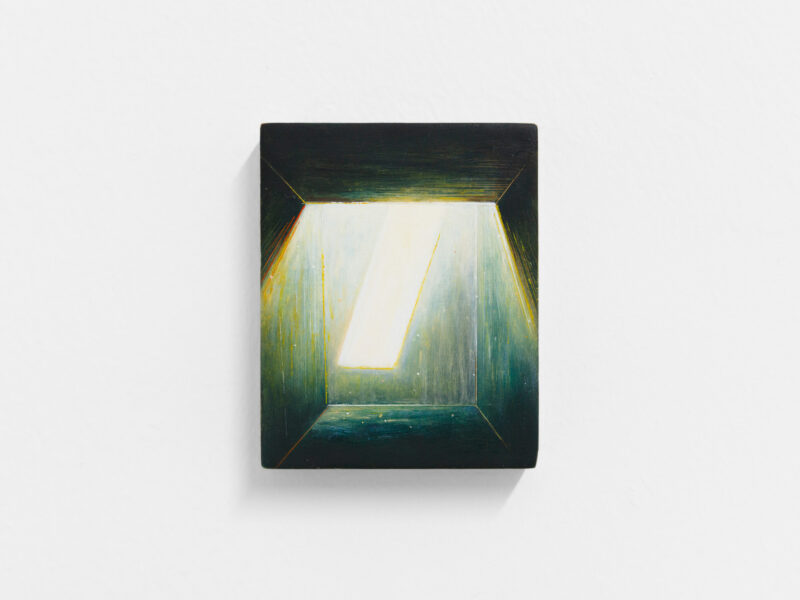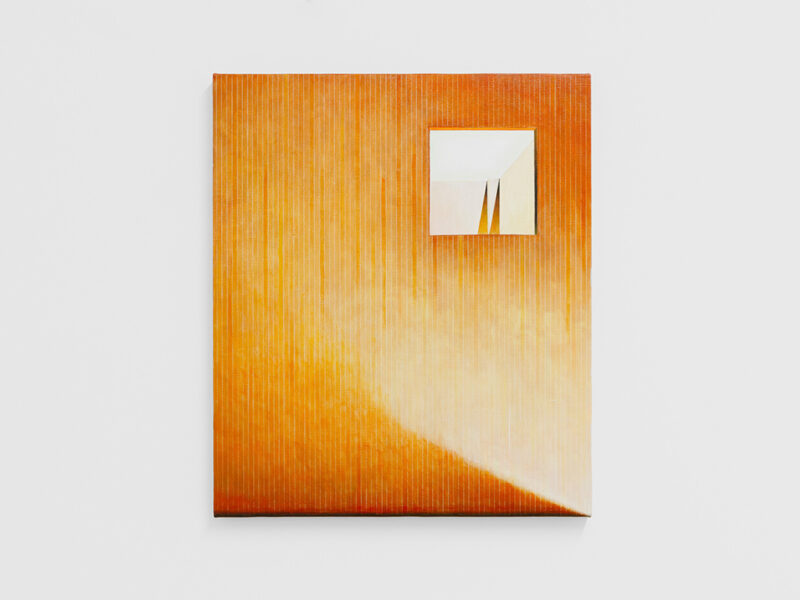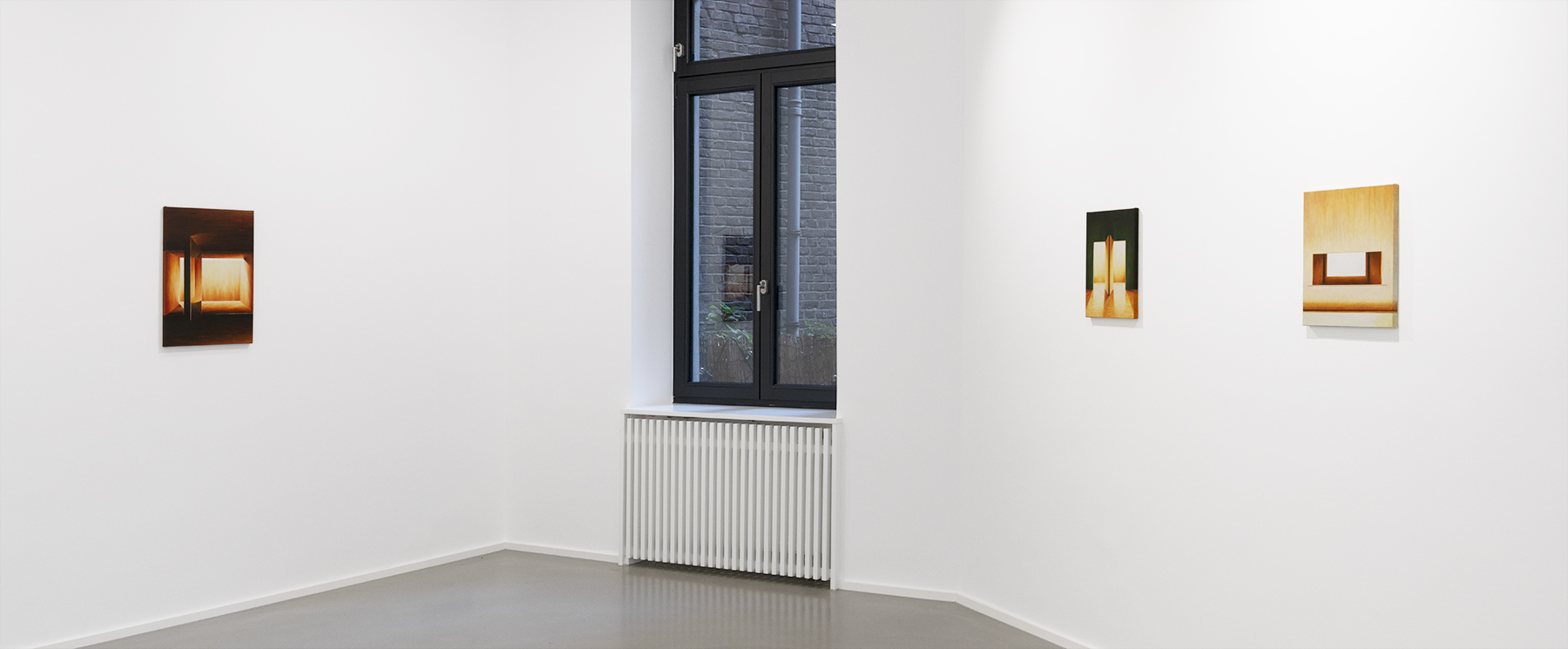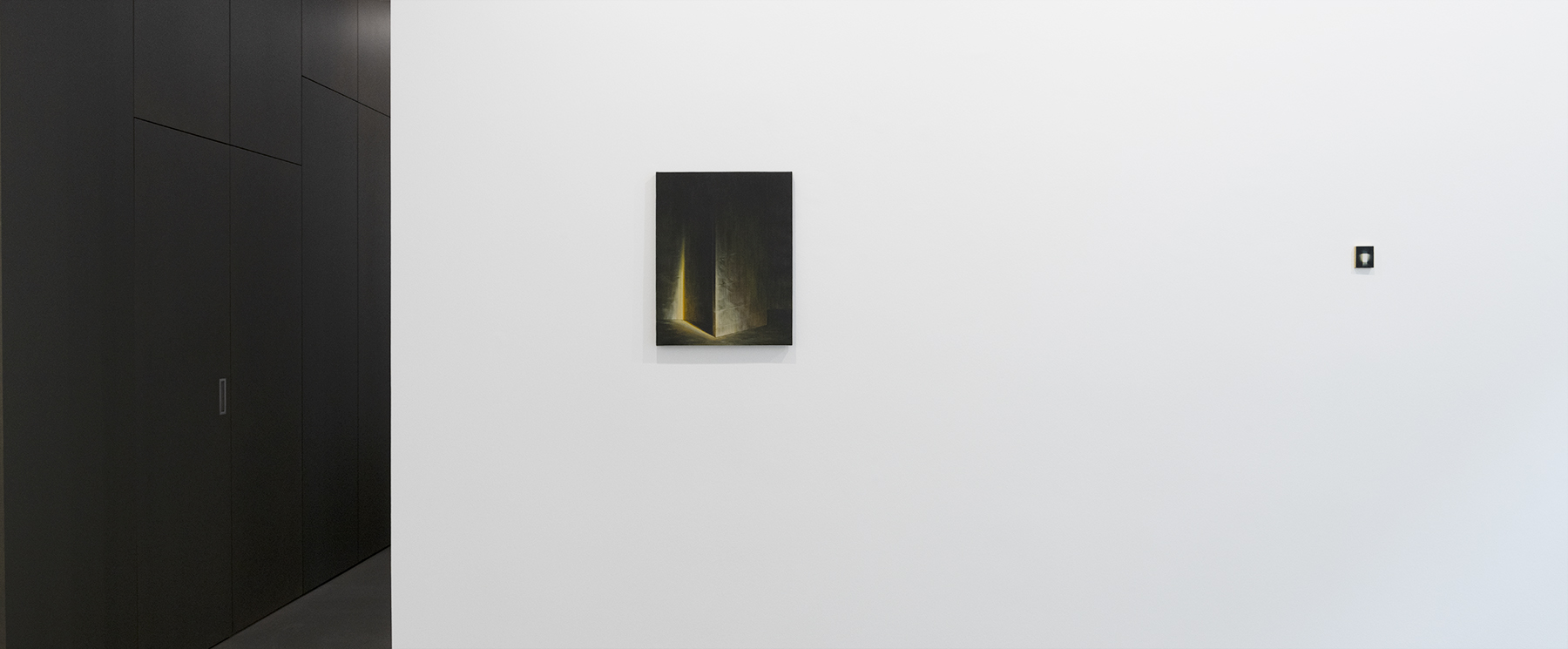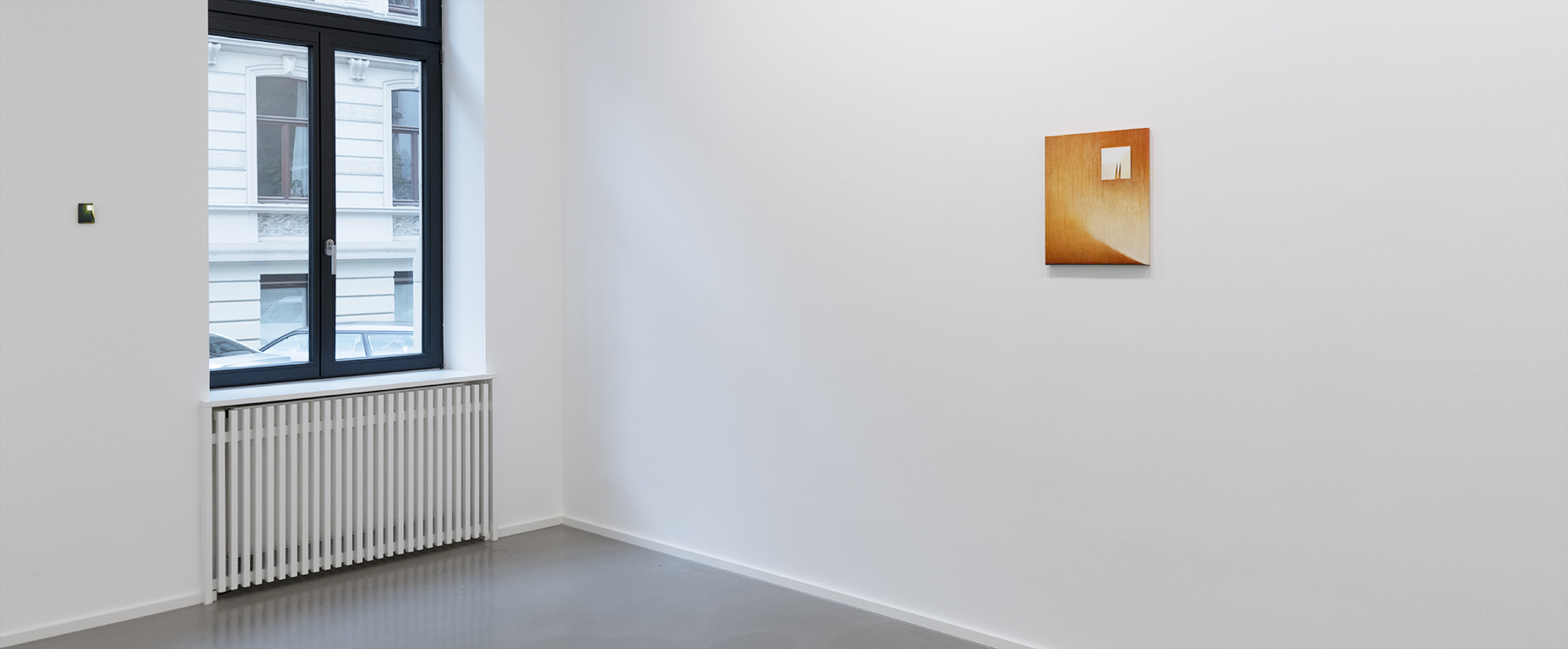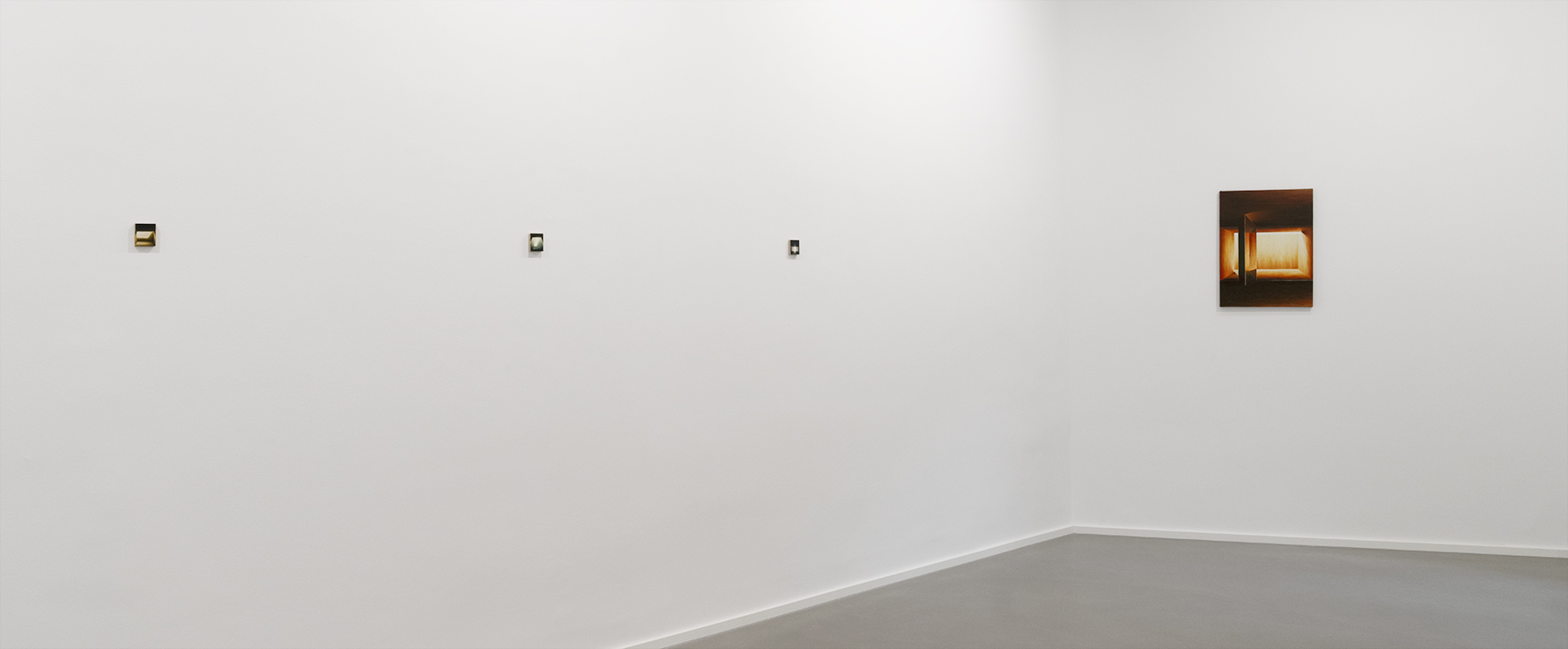The exhibition »Mado« shows paintings by Hong Kong-based artist Szelit Cheung. The Japanese word Mado means window, and in Szelit Cheung’s works it serves as a source of light from which complex studies of space and light develop.
Works from the series Door, Kan, Mado and Folding Space can be seen in the exhibition. The titles all refer to spatial conditions that also represent intermediate or transitional spaces.
The artist’s attentive and subtle observations focus on the interaction of light, darkness and color and extend to body, surface, space and time. The painting process is preceded by a precise approach to the subject of the picture: After a few sketches, Szelit Cheung makes a model, which he observes in detail in changing light conditions before the actual painting process begins and he captures his compositions with oil paint on canvas or wood. In Szelit Cheung’s work, fleeting rays of light in the room fan out into manifold shades of orange, green and blue, creating a complex depth of color.
In the palm-sized paintings on wood from the Mado series, Szelit Cheung captures diffuse light situations. Due to their dimensions, the works demand close-up observation; it almost feels like looking through a keyhole. Between reality and illusion, he uses simple forms, light and color to create immaterial yet powerful moments.
The minimalist interior in the work »Folding Space IV« is only vaguely hinted at. The architectural features dissolve in the darkness, the emptiness increases, and the light only allows an abstract idea of spatiality.
Light, darkness and color form an exciting, dialectical unity in the works of Szelit Cheung. Depending on the time of the day, the incoming natural light in the room corresponds with the light on the paintings; for a moment, the exhibition space and the pictorial space are in dialog.


